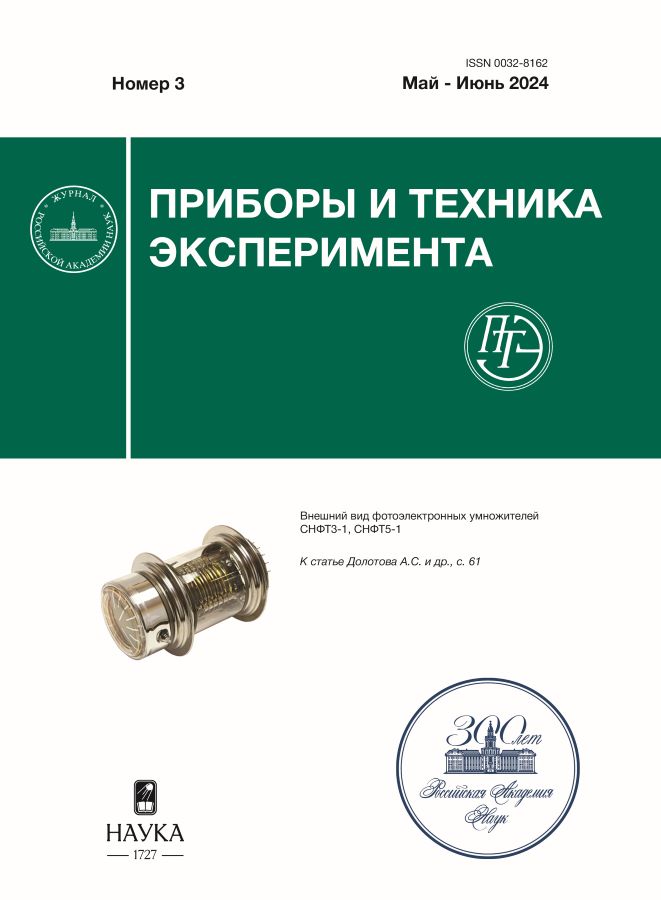Перестраиваемый диодный лазер с коротким тандемным внешним резонатором
- Authors: Чернышов А.К.1, Михеев П.А.1
-
Affiliations:
- Самарский филиал Физического института им. П.Н. Лебедева Российской академии наук
- Issue: No 3 (2024)
- Pages: 86-90
- Section: ОБЩАЯ ЭКСПЕРИМЕНТАЛЬНАЯ ТЕХНИКА
- URL: https://freezetech.ru/0032-8162/article/view/682621
- DOI: https://doi.org/10.31857/S0032816224030112
- EDN: https://elibrary.ru/OVAODK
- ID: 682621
Cite item
Abstract
Разработана конфигурация короткого внешнего резонатора, обеспечивающая одночастотный режим генерации квантово-размерных диодных лазеров c широкой полосой оптического усиления. Особенностью предлагаемого внешнего резонатора является применение в качестве возвратного зеркала резонансного отражателя, образованного двумя тонкими (толщиной около 100 мкм) покровными стеклами. Лазер HL8338MG, снабженный подобным коротким внешним резонатором, позволил продемонстрировать непрерывную перестройку оптической частоты в полосе 100 ГГц и дискретную перестройку длины волны в интервале 12.3 нм при выходной мощности около 20 мВт. Пригодность указанного диодно-лазерного источника для спектроскопии газов подтверждена наблюдением трех линий поглощения Kr в области 829 нм в высокочастотном разряде низкого давления.
Full Text
About the authors
А. К. Чернышов
Самарский филиал Физического института им. П.Н. Лебедева Российской академии наук
Author for correspondence.
Email: chak@fian.smr.ru
Russian Federation, 443011, Самара, ул. Ново-Садовая, 221
П. А. Михеев
Самарский филиал Физического института им. П.Н. Лебедева Российской академии наук
Email: chak@fian.smr.ru
Russian Federation, 443011, Самара, ул. Ново-Садовая, 221
References
- Zybin A., Niemax K. // Spectrochim. Acta Part B. 1997. V. 52(8). P. 1215. https://doi.org/10.1016/S0584-8547(97)00013-X
- Woodworth S.C., Cassidy D.T., Hamp M.J. // Appl. Opt. 2001. V. 40(36). P. 6719. https://doi.org/10.1364/AO.40.006719
- Jennings D. E. //Appl. Opt. 1980. V. 19(1). P. 2. https://doi.org/10.1364/AO.19.000002
- Sidorin Y., Karioja P., Blomberg M. // Optics Commun. 1999. V. 164(1-3). P. 121. https://doi.org/10.1016/S0030-4018(99)00166-2
- Chernyshov, A.K., Mikheyev, P.A., Lunev, N.N., Azyazov, V.N. // J. Phys.: Conf. Ser. 2018. V. 999(1). P. 012010. https://doi.org/10.1088/1742-6596/999/1/012010
- Leiweke R.J., Ganguly B.N. // J. Appl. Phys. 2013. V. 113(14). P. 143302 https://doi.org/10.1063/1.4800556
- Niermann B., Böke M., Sadeghi N., Winter J. // Eur. Phys. J. D. 2010. V. 60. P. 489. https://doi.org/10.1140/epjd/e2010-00166-8
- Chernyshov A.K., Mikheyev P.A., Ufimtsev N.I. // J. Quant. Spectrosc. Radiat. Transf. 2021. V 258. P. 107368. https://doi.org/10.1016/j.jqsrt.2020.107368
- Чернышов А.К., Воронцова Е.А. // Известия Самарского научного центра Российской академии наук. 2013. Т. 15(6). C. 135.
Supplementary files














